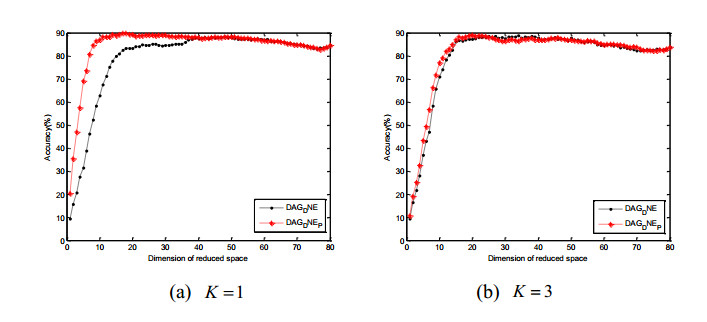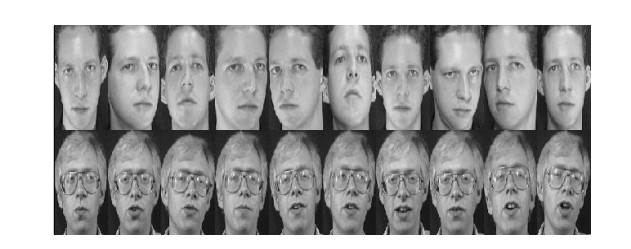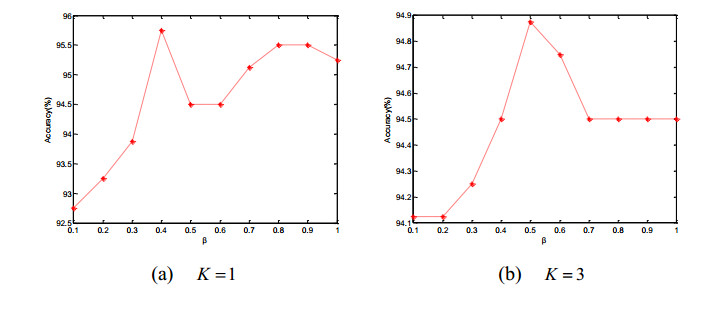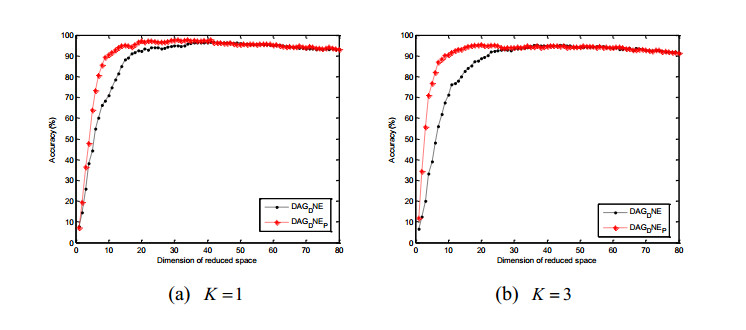1.
Introduction
With the rapid growth of mobile devices, it is feasible and urgent-demand to deploy image recognition applications on mobile devices to provide image recognition services. However, since the constraint computing and storage resource, as well as energy resources, it is difficult to perform all image recognition applications on mobile devices. In recent years, a popular solution is to offload the image recognition tasks to the remote cloud servers [1,2]. That is, the image recognition applications deployed on mobile devices, they only responsible for collecting images. Then, the mobile devices upload the images to the cloud servers to perform recognition tasks. Although this solution can save the computing and storage resources, as well as the energy resources of mobile devices. In doing so, mobile devices can provide long-lasting image recognition services for mobile users. However, in 5G networks, if hundreds of thousands of mobile users upload images to the cloud servers at the same time, the core network can be overload and even incurs network congestion, it is very likely resulting in long transmission delays. Therefore, traditional cloud computing solution cannot meet the requirements of real time response.
Mobile Edge Computing (MEC), as an emerging architecture, it is possible to solve the traditional computing solution problems that cannot meet the users real time demands [3,4,5,6]. In MEC architecture, many small-scale edge servers are deploying at the edge of the network. These edge servers can provide computing and storage resources for image recognition applications. Thus, mobile users can offload the image recognition tasks to the edge servers rather than the cloud servers. Since users close to the edge servers, generally, one hope. Therefore, the transmission delays can be reduced. In traditional cloud computing scheme, running deep neural network models on the cloud servers can achieve good performance. The reason is that cloud servers are regarded as rich computing and storage resources, as well as stored a large number of trainable images. It is well known that using a large number of trainable images to train a very deep neural networks can achieve good performance. However, in MEC architecture, a single edge server has a small range so that it only can collect a small number of images. Therefore, it is inappropriate to use deep neural network models to run the image recognition tasks.
To address this problem, in this paper, we propose a location-ware feature extraction algorithm for image recognition, called DAGDNEP. In DAGDNEP, we employ DAGDNEP to construct two adjacency graphs to preserve the intra-class information and the inter-class information that make every samples linked to its homogeneous and heterogeneous neighbors respectively and also, we introduce a heat kernel function as weight when construct matrix of the intra-class and inter-class. Thus, DAGDNEP could keep the geometric structure of the given data that find an optimal projection matrix. Experimental results validate the effectiveness of our DAGDNEP in comparison with DAGDNE algorithm.
The reminder of this paper is organized as follows. Section 2 introduces the related work, which includes mobile edge computing and feature extraction algorithm. In Section 3, we introduce the proposed feature extraction algorithm. In section, we discuss the combination between MEC architecture and the proposed algorithms. The experimental results are presented in Section 4. Finally, we provide the concluding remarks in Section 5.
2.
Related work
2.1. Mobile edge computing
Mobile Edge Computing (MEC), which can provide computing and storage resources for image recognition applications by deploying some small-scale servers at the edge of the network [3,4,5,6]. MEC mainly solves the problems of traditional mobile cloud computing that directly upload the raw images to the cloud servers that incurs long response time [7]. With the explosive growth of mobile traffic, if hundreds of thousands of mobile users upload the image data to cloud servers at the same time, it may incur the core network congestion, resulting longer transmission delays and longer response time. The architecture of MEC is as shown in Figure 1, which consists of three layers of components, mobile devices, edge servers and cloud servers.
Mobile Devices: Mobile devices are the front-end devices, such as smartphone, laptop, iWatch, etc. Mobile devices are utilized to install image recognition applications. Since the constraint computing and storage resources of mobile devices, we only use them to capture images and receive results, as well as show results. Edge Servers: Edge servers are small scale servers deploying at the edge of the network. Edge servers are typically performing single function with limited resources, such as cache servers and specialized servers. Since edge servers close to users, using edge servers to provide computing and storage resources for image recognition applications can reduce the transmission delay. This is because mobile users only require upload the captured image to the edge servers instead of cloud servers. Cloud Servers: Cloud servers are regarded as having rich computing and storage resources. In general, the cloud servers are very far away from users.
2.2. Feature extraction algorithm
Many feature extraction algorithms are proposed in recent years, such as discriminant neighborhood embedding [8], marginal Fisher analysis [9,10], local features discriminant projection [7], Appropriate points choosing based DAGDNE [11], double adjacency graphs-based discriminant neighborhood embedding [12].
For example, Zhang et al. [8] proposed discriminant neighborhood embedding, which supposes that multi-class data points in high-dimensional space tend to move due to local intra-class attraction or inter-class repulsion, and the optimal embedding from the point of view of classification is discovered consequently. Yan et al. [9,10] proposed marginal fisher analysis, which adopts two adjacency graphs to preserving the geometric structure. This approach first constructs two adjacency graphs, the intrinsic graph and the penalty graph, of which the intrinsic graph characterizes the intra-class compactness and connects each data point with its neighboring points of the same class, while the penalty graph connects the marginal points and characterizes the inter-class separability. Ding and Zhang [12] proposed double adjacency graphs-based discriminant neighborhood embedding, which let each sample be respectively linked to its homogeneous and heterogeneous neighbors by constructing two adjacency graphs. As a consequence, balance links are produced, neighbors belonging to the same class are compact while neighbors belonging to different classes become separable in the subspace. Thus, DAGDNE could keep the local structure of a given data and find a good projection matrix.
However, these algorithms ignore the location information. Thus, these algorithms just preserve the local structure but ignore the location information. Nevertheless, in the task of clustering or classification, the location information is very important.
3.
The location-aware feature extraction algorithm
In this section, we will introduce the location-aware feature extraction algorithm, called DAGDNEP. Let $\left\{ {({{\bf{x}}_i}, {y_i})} \right\}_{i = 1}^N$ be a set of training samples, where ${{\bf{x}}_i} \in {R^d}$ and ${y_i} \in \{ 1, 2, ..., C\} $. DAGDNEP aims to find a projection matrix ${\bf{P}}$, being able to extract the discriminative features from the raw image data. The extracted discriminative features have the characteristic that images with the same class label are compact, while images with different class labels are separable.
Similar to DAGDNE algorithm, DAGDNEP requires to construct two adjacency graphs. Let ${{\bf{F}}^w}$ and ${{\bf{F}}^b}$ be the intra-class and inter-class adjacency matrices, respectively. For an image ${{\bf{x}}_i}$, $NH_k^w({{\bf{x}}_i})$ and $NH_k^b({{\bf{x}}_i})$ denote its $K$ homogeneous set and heterogeneous set, respectively.
The intra-class adjacency matrix ${{\bf{F}}^w}$ and inter-class adjacency matrix ${{\bf{F}}^b}$ are defined as
where $\beta \in (0, 1]$, which controls the scale of weights.
The intra-class scatter $\Phi ({\bf{P}})$ and inter-class scatter $\Psi ({\bf{P}})$ are defined as follows:
where ${{\bf{D}}^w}$ and ${{\bf{D}}^b}$ are diagonal matrices and their entries are column sum of ${{\bf{F}}^w}$ and ${{\bf{F}}^b}$, respectively.
In order to achieve impressive accuracy, the extracted features need to satisfy that features from the same class labels are compact while features from different class labels become separable. To this end, we need to maximize the margin of total inter-class scatter and total intra-class scatter, i.e.,
DAGDNEP aims to find a feature extractor ${\bf{P}}$ by solving the objective function (5). The complete derivation and theoretical justifications is similar to DAGDNE, so the detail of the derivation and theoretical justification can be tracked back to [12]
Where ${\bf{S}} = {{\bf{D}}^b} - {{\bf{F}}^b} - {{\bf{D}}^w} + {{\bf{F}}^w}$. The projection matrix ${\bf{P}}$ can be found by solving the generalized eigenvalue problem as follows:
Thus, ${\bf{P}}$ is composed of the optimal $r$ projection vectors corresponding to the $r$ largest eigenvalues.
The details of DAGDNEP is given in Algorithm 1.
The DAGDNEP algorithm is an improved version of the DAGDNE algorithm. DAGDNE could keep the local intrinsic structure for the raw image data through the extracted features by constructing two adjacency graphs. However, DAGDNE just gives the weight value +1 when construct intra-class adjacency graph and inter-class adjacency graph. That just give +1 cannot preserve the geometric structure of the given data and the geometric structure plays a different role in the classification task. Therefore, when extracting the discriminative features from the raw image data, some more important discriminative features may miss. DAGDNEP regulates heat kernel function as the weight that can preserve the geometric structure among data. As a result, DAGDNEP can achieve a good performance.
4.
Discussion
Since a single edge server only collects a small amount of images, it is inappropriate to use deep neural network models to perform image recognition tasks. The reason is that using deep neural network models cannot achieve good performance due to the small number of images stored on a single edge server. In the contrast, the proposed feature extraction algorithm can well fit the small number of images and achieve good performance. In this sense, Combining the MEC architecture [13,14,15,16,17] and the proposed feature extraction algorithm to provide image recognition services is advisable.
5.
Experiments and analysis
We have conducted experiments on two datasets, which are publicly available, UMIST and ORL datasets. Wherein the UMIST dataset contains 564 face images of 20 individuals and the ORL dataset contains 400 face images of 40 individuals, with 10 images for each individual.
DAGDNE and the proposed algorithm are implemented in MATLAB 2015b, and are conducted on an i5 Intel ® Core CPU 2.50 GHz machine with 4G bytes of memory. In our experiment, which requires the nearest neighbor parameter $K$ for constructing adjacency graphs. For simplicity, the nearest neighbor classifier is used for classifying the test images
To evaluate the effectiveness and the correctness of DAGDNEP, experiments are carried out on UMIST and ORL databases, and the results are compared with DAGDNE.
In the experiment, the parameter $\beta $ is selected to be several different sets of values so as to observe their effect on the recognition rate. The whole validation set, and the value of parameter $\beta $ is selected based on the training result on the validation set.
5.1. Results with UMIST dataset
The UMIST dataset consists of 564 images of 20 individuals, taking into account race, sex and appearance. Each subject is taken in a range of poses from profile to frontal views. The pre-cropped dataset is used and the size of each image is $112 \times 92$ pixels, with 256 gray levels per pixel. For UMIST datasets, we randomly select 20% images from the database as training samples, the remaining 80% as test samples. Figure 2 shows some image samples in the UMIST dataset. We repeat 20 runs and report the average results.
First, we consider parameter choose, the nearest neighbor parameter $K$ is selected in the set $\{ 1, 3\} $. Figure 3 illustrates the relationships of accuracy and the value of $\beta $. From Figure 3 we know that different values of $\beta $ has different accuracy, which $\beta $ as a tuning parameter that preserve the geometric structure of the given data. So we know that the geometric structure information plays a great role in the classification task.
Figure 4 (a) and (b) show the accuracy of two algorithms vs. dimensionality of subspace with different $K$. From Figure 4 (a) and (b), the classification accuracy of DAGDNEP and DAGDNE algorithms are all increase rapidly, however, DAGDNEP is more rapidly than DAGDNE.
5.2. Results with ORL dataset
The ORL dataset is composed of 40 distinct subjects, each of which contains 10 different gray-scale images. In ORL dataset, images for each subject were taken by varying the lighting, facial expressions or facial details at different times, and all were taken against a dark homogenous background in an upright and frontal position. The size of each image is $112 \times 92$ pixels, with 256 gray levels per pixel. For ORL dataset, we randomly select 60% images from the database as training samples, the remaining 40% as test samples. Figure 5 shows some image samples in the ORL dataset. There are 240 training samples and 160 test ones. Figure 6 illustrate the relationship $\beta $ and recognition rate with $K = 1$ and $K = 3$, respectively.
In this experiment, we reduce dimensionality with two times so as to get a high running speed. When choose parameter, similar to UMIST dataset, the neighborhood parameter $K$ in DAGDNE and DAGDNEP is set to be 1 and 3, respectively.
Figure 7 shows the accuracy of DAGDNE and DAGDNEP algorithms vs. dimensionality of subspace with different $K$. We can see that DAGDNEP can obtain good performance and more rapidly than DAGDNE to get the best performance. Compared with DAGDNE, DAGDNEP has a better recognition rate and its optimal discriminative subspace has a relatively low dimensionality so as to reduce the complexity of calculation.
6.
Conclusion
In this paper, we proposed a location-aware feature extraction algorithm to fit the image recognition in the MEC environment. By considering that in MEC architecture, a single edge server only collects a small number of images, we propose a location-aware feature extraction algorithm, which can achieve good performance when the trainable images are very few. Moreover, the proposed feature extraction algorithm considers the location information of the images, compared with traditional feature extraction algorithms, it achieves higher accuracy. Thus, by combining the MEC architecture and the proposed feature extraction algorithm, it is possible to support the mobile devices to provide long-lasting real time response and high accuracy image recognition services. Finally, on two publicly datasets, we demonstrate the effectiveness of our proposed feature extraction algorithm.
Acknowledgment
The work is supported by National Natural Science Foundation of China (No.61003100), Hubei Provincial Natural Science Foundation of China (No. 2017CFA012), National Natural Science Foundation of China (No. 61572012), National Natural Science Foundation of Hubei Province (No.2015CFB525) and Wuhan science and technology plan innovation team project (No.201307020402005).
Conflict of interest
All authors declare no conflicts of interest in this paper.
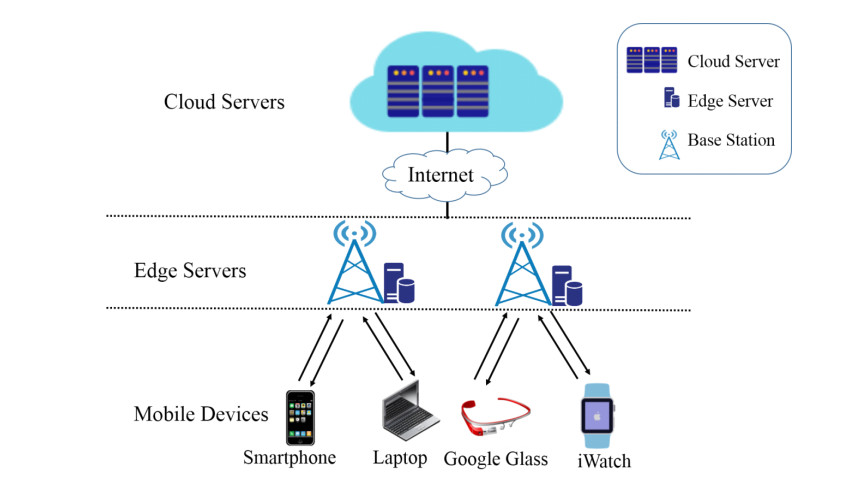









 DownLoad:
DownLoad:


